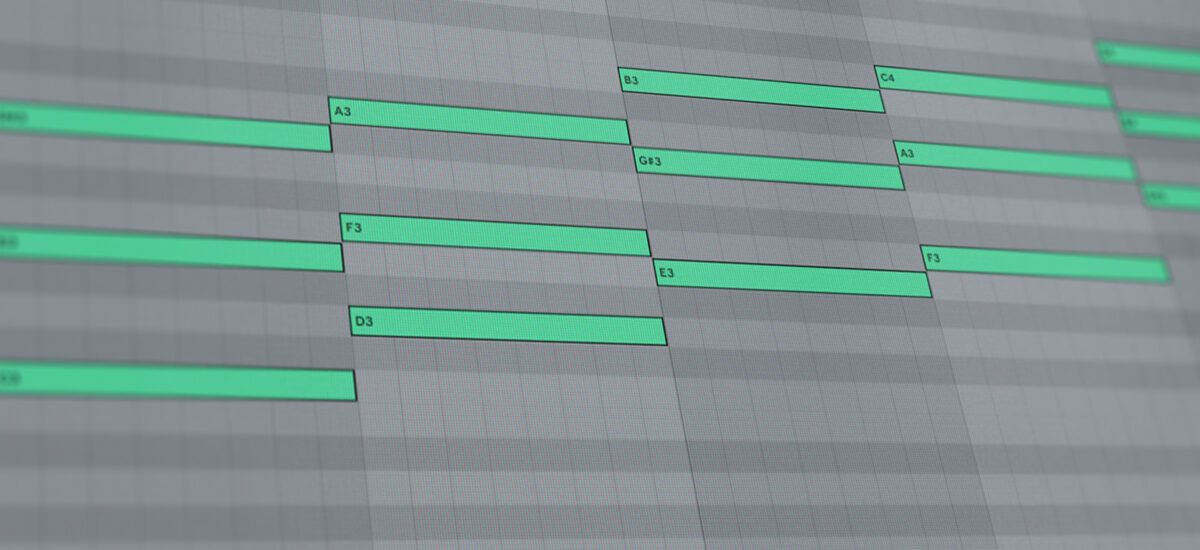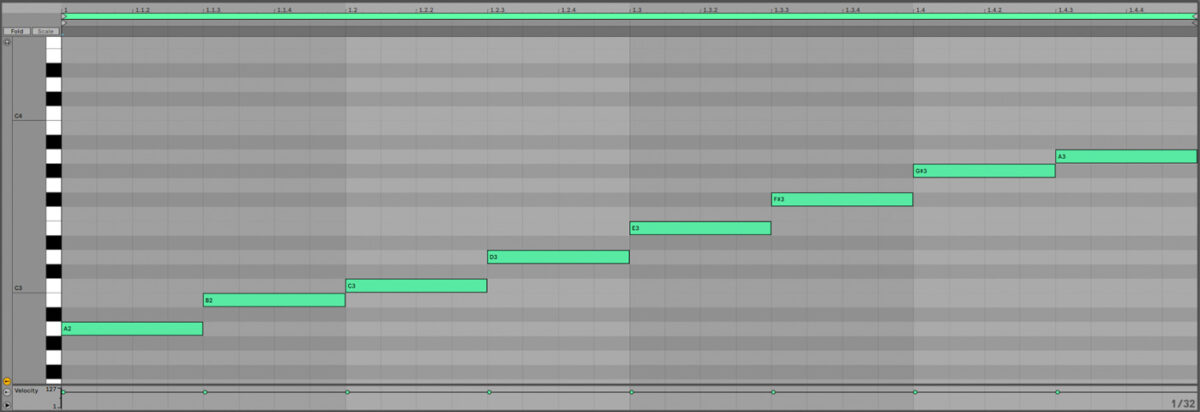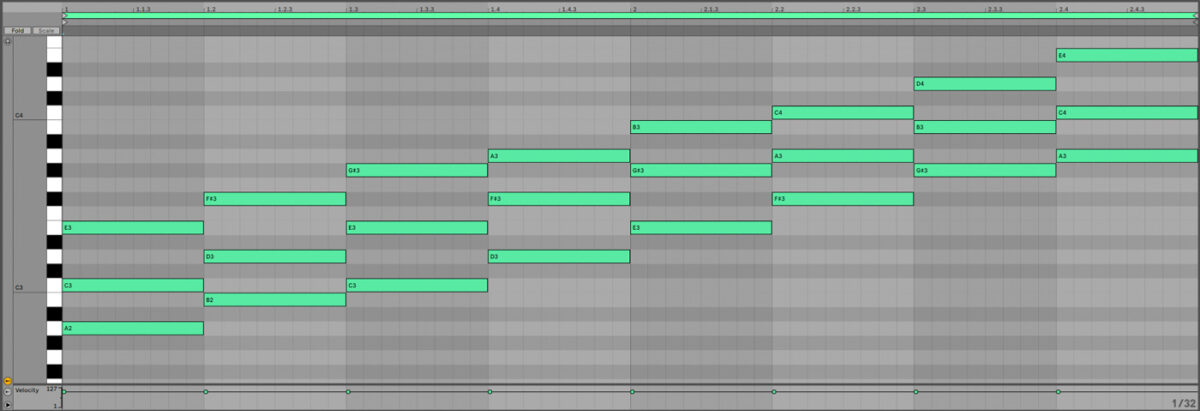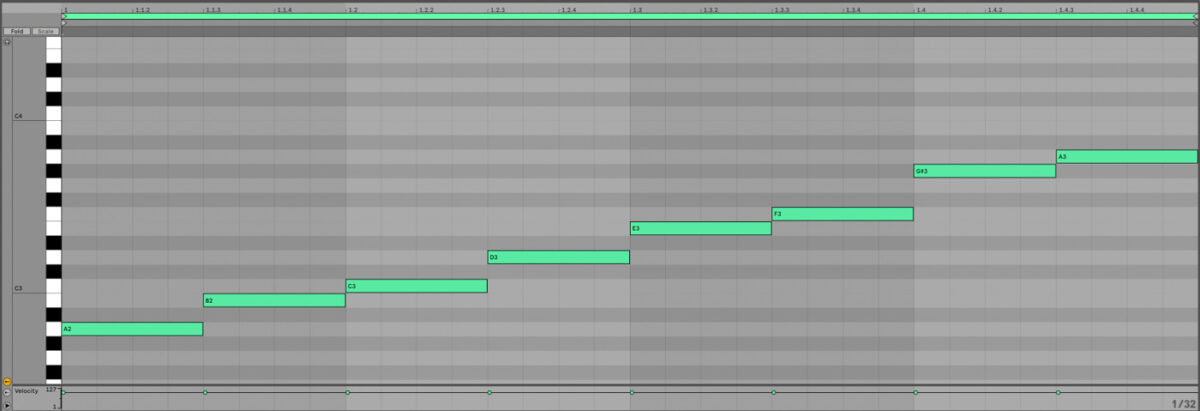
As a songwriter, possessing a solid understanding of the fundamental elements of music is crucial. Among these elements, chord progressions play a pivotal role. While you might already be familiar with the concept, you’ll need a solid understanding of chord progressions to use them in your own compositions.
Chord progressions are sequences of chords that adhere to specific patterns. You may already know something about major chord progressions, which can bring a light and happy feeling to your music. But as a well-rounded composer, you’re probably intrigued by the prospect of weaving together minor chords to infuse your songwriting with a more introspective and somber quality.
Let’s take a look at some minor chord progressions and how you can use them to evoke the darker side of songwriting.
Jump to these sections:
Follow along with Komplete Start, a free bundle of instruments, effects, and more to start writing your music in your DAW.
What are minor chord progressions?
Minor chord progressions are harmonic sequences that are derived from the minor scale. In order to write and use minor chord progressions, we must learn how they are constructed.
Let’s take a quick look at how we can extrapolate chords from the A minor scale.
The A natural minor scale is made up of the following notes:

Basic chords are made up of three notes from the scale we are using. We refer to these three notes as a “triad”. These notes are chosen by taking one note from the scale, skipping the next, and then using the note after that again. In other words – use one, skip one until you have a triad. Let’s see how that materializes in the context of the A minor scale.
Starting with the first degree of the scale, A, we can form an A minor chord by using one note (A), skipping the next, using another (C), skipping the next, and finally using one more (E). That leaves us with A,C,E – a minor chord.
Let’s utilize that same process for the entirety of the A minor scale until we have all the triads we can make. We’ll use Roman numerals to label them:
- i: A minor
- ii°: B diminished
- III: C major
- iv: D minor
- v: E minor
- VI: F major
- VII: G major

We use Roman numerals in the context of chord progressions to articulate which degree of the scale the chord is based on. A lowercase letter indicates a minor chord, while the capitalized version indicates a major chord. The degree symbol ‘°’ means that the chord is diminished (meaning that it has a flat third degree, and also a flat fifth degree).
So for example, a ‘i’ chord is a minor chord based on the first degree of the scale, and a ‘VI’ is a major chord based on the sixth degree of the scale. As you can see, there are not only minor chords in the context of a minor scale.
There are different types of minor scales, all of which can be used to create minor chord progressions. Let’s examine some more minor scales. A few common ones are the melodic minor, the harmonic minor, and minor modes.
The melodic minor in A has a raised sixth and seventh degree like this:

So the chords will be as follows:
- i: A minor
- ii: B minor
- III+: C augmented
- IV: D major
- V: E major
- vi° F# diminished
- vii°: G# diminished

As you can see, the raising of the sixth and seventh degrees of the scale has resulted in a different set of chord from the natural minor. That includes a new kind of chord—the augmented chord (which has a major third, and a raised or “augmented” fifth).
Next, we have the harmonic minor which is essentially the same as a natural minor, but with a raised seventh degree:

And consists of these chords:
- i: A minor
- ii: B minor
- III+: C augmented
- iv: D minor
- V: E major
- VI: F major
- vii°: G# diminished

Once again we are left with a new set of chords. This kind of logic can be applied to any minor modes to extract more minor chords to use for interesting minor chord progressions.
Now that we have a selection of chords to work with, the process is quite simple. We string together certain chords that we have built from the minor scale to create chord movement.
5 minor chord progressions to use in your songs
Some chords tend toward others quite strongly, which is a phenomenon you can understand by learning more about the circle of fifths. When we chain these chords together in different ways we get chord progressions.
It’s worth noting that many songs share common minor chord progressions. These tried and tested progressions are a valuable asset for your own compositions, so don’t be afraid to use them. Just remember that while the fundamentals of these minor chord progressions should stay constant, you can (and should) experiment with keys, melodies, and transitions to create something relatively unique.
With that said, let’s explore some of the most common minor chord progressions out there. We’ll be giving examples of these chord movements in songs. Be aware that while the chord progressions may be the same, the timbres and keys used are different. We’ll continue analyzing in A minor.
1. i-VI-III-VII : A minor – F major – C major – G major
This is one of the most common minor chord progressions in all of popular music. It uses chords derived only from the natural minor scale. You can hear this progression in ballads of many different genres including hip-hop, rock, and pop. It’s popular for a reason—this chord progression is emotionally resonant.
You can hear it in “Love the Way You Lie” by Eminem:
As well as “Numb” by Linkin Park:
2. i-VII-VI-iv : A minor – G major – F major – D minor
This minor chord progression is an exciting way to descend down the minor scale and create a stepwise bassline. There’s also a sense of surprise here—the listener might anticipate the next note in the sequence to be E minor after the F major. However, the introduction of D minor is fun and unpredictable.
An upbeat version of this can be heard in “Lights” by Ellie Goulding.
And a more somber version is present in Pink Floyd’s “Comfortably Numb.”
3. VI-VII-i : F major – G major – A minor
The VI-VII-i movement is a clever move in the context of minor chord progressions. It commences with a major chord, transitions to another major chord, effectively heightening tension, and ultimately culminates with a minor chord. This is a subversion of the traditional IV-V-I major chord progression which offers a subtle twist on the formula by substituting the relative minor chord as the final resolution.
This movement can be heard in “Stay” by Justin Bieber and The Kid LAROI and in “Redbone” by Childish Gambino.
4. i-III-IV : A minor – C major – D major
While perhaps not as popular as the others on this list, the i-III-IV is a great way to create distinctive harmonic movement. This chord progression is known for its unique combination of major and minor chords (including the IV from the melodic minor) to create a contrast of dark and bright.
You can hear it in the verses of “Hurt” by Nine Inch Nails.
As well as in the first half of each phrase in “House Of The Rising Sun” by the Animals.
5. i-VI : A minor – F major
The final chord movement we’re looking at is the simplest on this list. It is also, however, one of the most powerful ways of creating a cycle of tension and release. The movement from the melancholic “i” to the more uplifting “VI” produces a sense of resolution and emotional contrast in music.
The verse of “Californication” by Red Hot Chili Peppers uses this progression, as well as “Rockstar” by Post Malone.
Start using emotional minor chord progressions
Knowing how to write minor chord progressions is essential for composers. It gives us the ability to create emotional passages and bring out the sadder and more reflective side of our songwriting.
Download Komplete Start for free and use these minor chord progressions – as well as any new ones you create – in your own musical compositions to evoke contemplation in your listeners.















